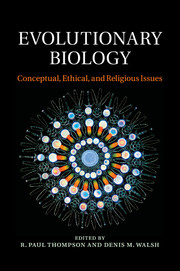
- Cited by 1
-
Cited byCrossref Citations
This Book has been cited by the following publications. This list is generated based on data provided by Crossref.
Thompson, R. Paul 2022. Evolution, Morality and the Fabric of Society.
- Publisher:
- Cambridge University Press
- Online publication date:
- March 2014
- Print publication year:
- 2014
- Online ISBN:
- 9781139208796
- Subjects:
- Life Sciences, Evolutionary Biology, Philosophy of Science, Philosophy


